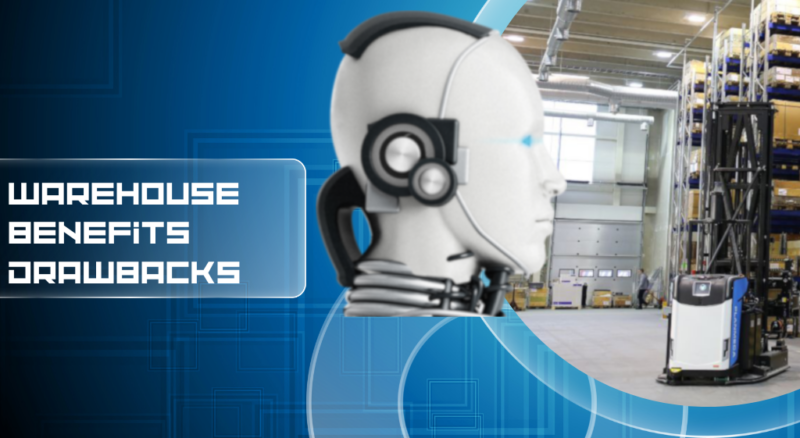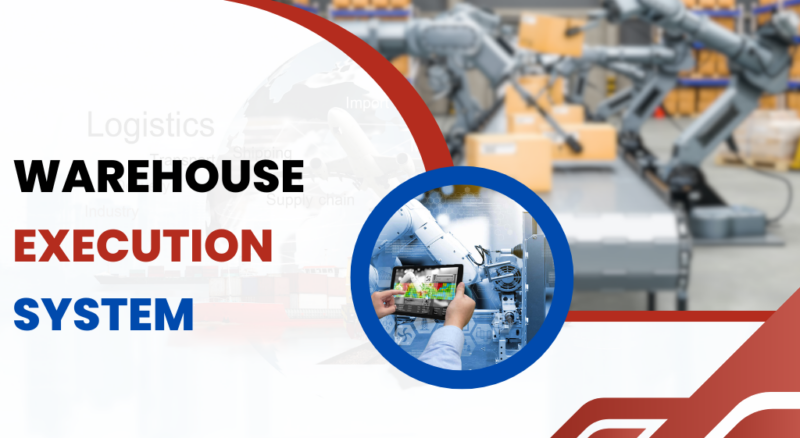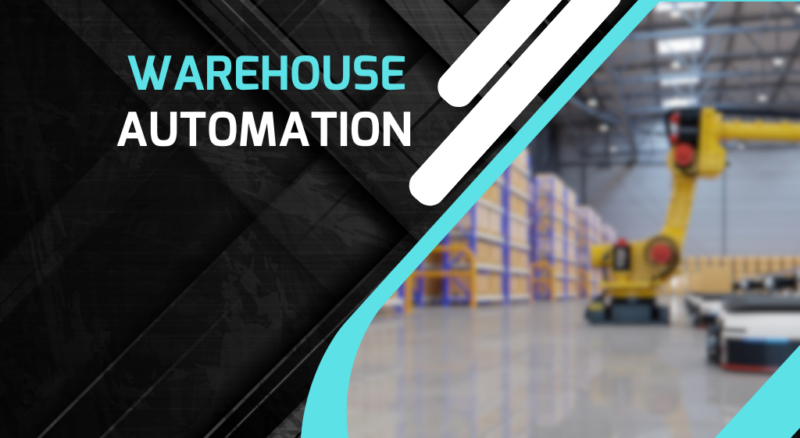For both budding businesses and established corporations alike, the intricate world of warehouse management can seem daunting. With the advent of cutting-edge technology and innovative practices, warehouse automation has emerged as an enticing solution to common challenges.
In this comprehensive guide, we will delve into what warehouse automation entails, its benefits and drawbacks, types of automation, and practical steps for implementation. We invite you to journey with us as we unravel the fabric of this significant aspect of modern logistics.
The Basics

Warehouse automation refers to the process of leveraging technology and machinery to streamline and optimize various warehouse operations. Before we explore its intricacies, let’s unravel the concept from its basic elements.
In essence, a warehouse is a large building where raw materials or manufactured goods are stored before their distribution for sale. These facilities are critical for inventory management and act as crucial nodes in the supply chain network.
Warehouses are more than mere storage spaces. They are vibrant hubs of activity where goods are received, stored, packed, and dispatched. Efficient warehouse management can greatly enhance a company’s operational efficiency, customer satisfaction, and, ultimately, its bottom line.
What Does Automation Entail?
Automation, in general, refers to the application of technology, machinery, or systems to perform tasks with minimal human intervention. It ranges from simple tasks like switching on a light using a motion sensor to complex operations such as running an entire production line in a factory.
In the context of warehouses, automation includes the use of automated machinery, software, and processes to enhance various operational aspects, from inventory management and order picking to packaging and shipment. The goal is to increase efficiency, accuracy, and speed while reducing labor costs and human error.
Benefits and Drawbacks

Adopting warehouse automation can bring about a plethora of advantages, but it also comes with potential challenges. It’s crucial to weigh these factors before implementing an automation strategy.
The Benefits
From improved efficiency to error reduction, warehouse automation can offer an array of benefits:
- Increased Efficiency: Automated processes are typically faster and more efficient than manual ones, boosting warehouse productivity.
- Improved Accuracy: Automation reduces the risk of human error in tasks like inventory tracking and order picking, enhancing accuracy.
- Reduced Labor Costs: By replacing or augmenting manual labor, automation can significantly reduce labor costs.
- Enhanced Safety: Automated systems can perform dangerous tasks, thus reducing the risk of workplace accidents.
Despite these advantages, it’s important to acknowledge that automation isn’t a universal solution and may not be the best fit for all businesses.
Potential Drawbacks
While automation brings numerous benefits, it’s not without potential pitfalls:
- High Initial Costs: The upfront cost of implementing automated systems can be substantial.
- Technical Challenges: Maintenance of automated systems requires technical expertise, which can lead to additional training and hiring costs.
- Risk of Obsolescence: Technology evolves rapidly, and there’s a risk that automated systems could become outdated.
- Reduced Flexibility: Highly automated systems can be less flexible to changes in operations compared to manual systems.
Understanding these pros and cons can guide businesses in making informed decisions about whether to automate and to what extent.
Types of Warehouse Automation

Warehouse automation can manifest in numerous ways, varying in complexity and function. Here, we’ll explore some prevalent types of warehouse automation.
Robotic Automation
Robotic automation involves the use of robots to carry out various tasks within a warehouse. This can range from robotic arms used for picking items from shelves to autonomous guided vehicles (AGVs) that transport goods within the facility.
These robots are typically programmed to perform tasks accurately and efficiently. Advanced robots can even use machine learning to improve their performance over time. The adoption of robotic automation can significantly enhance warehouse operations by boosting efficiency, accuracy, and safety.
Warehouse Management Systems (WMS)
A WMS is a software solution designed to optimize warehouse operations. It aids in the efficient management of inventory, order fulfillment, and distribution.
These systems not only streamline processes but also provide valuable data insights, enabling better decision-making. A well-implemented WMS can enhance efficiency, reduce errors, and potentially increase profitability.
Implementation Process
Implementing warehouse automation is a strategic move that requires careful planning. Let’s delve into some practical steps for execution.
Assessing Your Needs
Before implementing any automation solution, it’s crucial to assess your current operations, identify pain points, and understand your automation goals. Consider factors like operational volume, type of goods handled, and available resources. An audit of your warehouse’s processes will offer a clearer picture of what types of automation will yield the most benefits.
Selecting the Right Technologies
Once you’ve identified your needs, the next step is selecting the right technologies to meet them. This might mean investing in robotic solutions for high-volume tasks, implementing a WMS for better inventory management, or adopting a combination of different technologies.
Remember, what works best for one warehouse might not necessarily be the best solution for another. It’s crucial to choose a system that fits your specific operational needs and budget.
Gradual Implementation and Continuous Improvement
Adopting automation doesn’t have to be an all-or-nothing proposition. It’s often more effective to start small, learn from initial implementations, and gradually scale up. As you adopt automated systems, it’s crucial to monitor their performance, identify areas for improvement, and make necessary adjustments.
Warehouse automation, when executed effectively, can usher in a new era of efficiency and productivity for your business. With careful planning and strategic implementation, it can serve as a powerful tool to tackle warehouse challenges and drive growth.
FAQs

How does warehouse automation reduce costs?
It can reduce costs by replacing repetitive tasks with automated systems, reducing the number of labor hours required. This is particularly effective in today’s competitive labor market, where labor availability is becoming a larger issue every year.
How does warehouse automation increase efficiency?
Automation increases efficiency by reducing the potential for human error in workflows, ultimately reducing waste and increasing output. This allows operations to become more productive and accurate, boosting key performance indicators for the operation.
How does warehouse automation enhance workplace safety?
Automated systems increase workplace safety by removing the human element and by keeping workers out of situations that can lead to accidents. This reduces the risk of accidents that can lead to injuries or even death, as well as the associated costs.
How can warehouse automation address labor availability concerns?
Automation can help address labor shortages by performing repetitive tasks more efficiently than human workers. This allows human workers to be allocated to more valuable tasks, while machines handle the more repetitive work.
What are some examples of warehouse automation technologies?
Conveyor systems, pallet handling systems, robotic palletizing systems, and warehouse execution systems (WES). These technologies can automate various tasks, from inventory management to order fulfillment.
What is a Warehouse Execution System (WES)?
It forms the nervous system of your operation, orchestrating the movement and placement of inventory and smoothly directing resources through the balanced release of work throughout all the functional areas of an operation.
What is the role of conveyor systems in warehouse automation?
Conveyor systems are effective automated solutions for moving products from one location to another. They can be designed to handle various types of products and can be critical components in both receiving and case sortation processes.
What are the considerations when implementing warehouse automation?
When doing this, it’s important to consider the up-front cost and desired return on investment, product geometry, production line rates or orders to be built each day, simultaneous production lines in operation, pallet patterns, speed, efficiency, and accuracy, ergonomics, and safety.
Final Words

Warehouse automation is a dynamic and potentially transformative aspect of modern logistics. Its benefits are manifold, but careful planning is required to navigate potential pitfalls. It’s our hope that this guide has offered you valuable insights into the intricate world of warehouse automation. Here’s to a future where businesses operate smarter, faster, and with greater efficiency.
